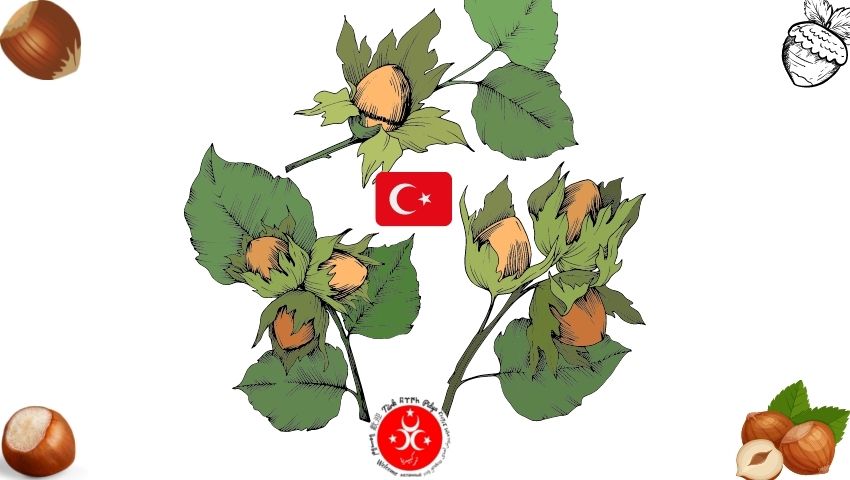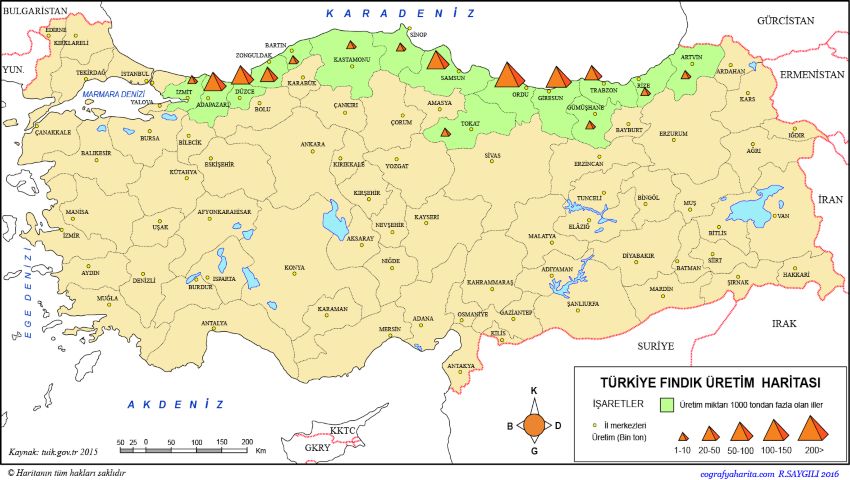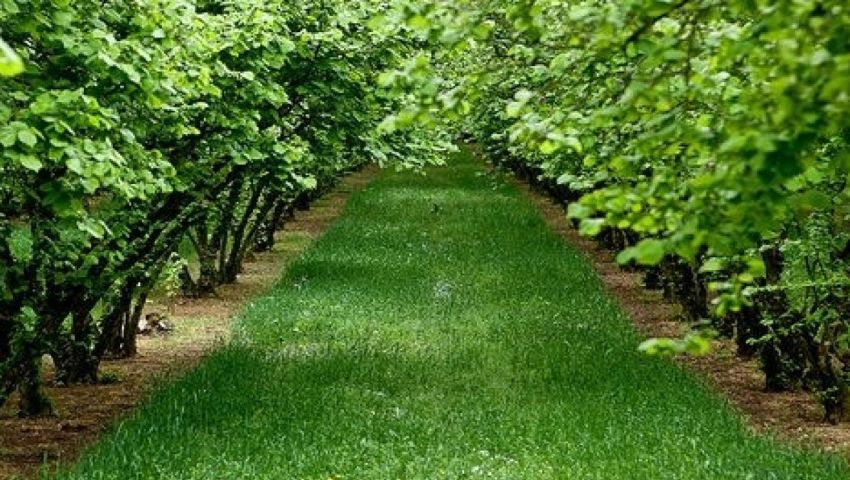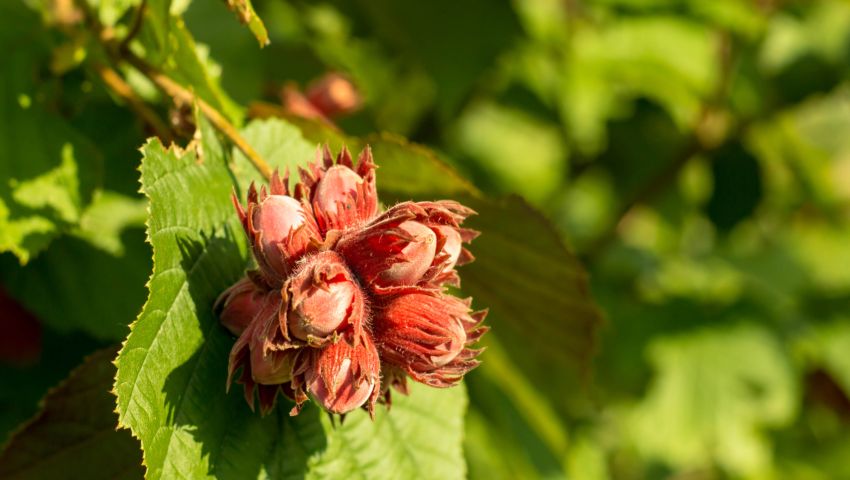Table of Contents
İn this article we will cover Hazelnut production in Turkey, from hazelnut farming areas to names of hazelnut types in Turkish and more!
Hazelnut farming in Turkey is a very important part of agriculture in Turkey, as the country is a leader in the production of hazelnut in the world.

About Hazelnut production in Turkey
Turkey is the leading hazelnut producer in the world. The climate and soil of Turkey are both perfect for growing this nut, which is actually a drupe. Hazelnuts can be eaten raw or roasted and have a very sweet taste that pairs well with chocolate or other desserts.
Because the hazelnut harvest is important to the Turkish government, it is called “green gold” in Turkey.
In 2838 BC, hazelnuts were grown in Turkey for the first time. During this time, the Anatolia area was thought to be a place where hazelnuts were grown. It is where hazelnut trees and walnuts started to grow around the world, and it is where hazelnut farming started. It spread to Greece, Italy, and the rest of the world.
Hazelnut growing areas in Turkey
Hazelnut is grown in Turkey in the northern regions , as it needs a certain climate to help develop the crop and production quality,
Hazelnut grow in a temperature between 8 degrees Celsius and does not exceed 30 degrees Celsius because high temperatures affect it negatively.
Hazelnut cultivation also requires rainfall and a certain amount of water for the success of its cultivation, reaching (500-800 mm annually),
All these specifications are available in the Black Sea region in the north of the country.
It started in the old days in the eastern Black Sea and then spread to the western Black Sea.
Among the provinces where hazelnuts are grown are:
Ordu province, which is home to hazelnut trees, Trabzon province, which is currently one of the most important hazelnut-producing provinces in Turkey,
Giresun, Duzce County, Sakarya, Zongeldak, Sinop, Kocaeli, Samsun.
The favorable climatic conditions in the Black Sea region and the hill that is 750 meters above sea level have helped the cultivation of hazelnut trees in the region.
And the Black Sea region is no longer the only one that grows hazelnuts in Turkey.
Hazelnut production in Turkey has recently extended to the cities of “Sanliurfa” and “Bitlis”, whose hazelnuts are considered to be of good quality to a large extent.

The development of hazelnut cultivation in Turkey
The area of hazelnut production in Turkey increased by 6.3% over previous years, and increased within ten years of (2006-2016),
The area of the hazelnut farm has reached approximately 7 million and 500 thousand hectares.
The volume of production has increased to reach 800,000 tons annually.
About 15-20% of the crop is consumed, and the rest is exported.
And in the years when the production is surplus, the surplus quantities of the crop are stored,
Names of hazelnut varieties grown in Turkey
Hazelnuts grown in Turkey have many names, with up to 18 different types, the most important of which are:
Tombul, Palaz, Fosa, Cakildak,
Two new classes have appeared:
Okay 28, Giresun Melezi

Advantages of hazelnut trees planted in Turkey:
Hazelnut trees planted in Turkey are distinguished by the fact that the nature of their fruits is storable, and their nutritional value is high, and this is why the demand for them increases.
That is why we find that the prices of Turkish hazelnut higher than their counterparts from different countries of the world.
Turkish hazelnut trees also have another importance other than the economic importance that we know. They are used in the following:
- Stabilization of sloping lands soil.
- Used as windbreak,
- Used as ornamental trees,
- Turkish hazelnut trees contain abundant pollen that supplies bees with the dust needed for the pollination process.
Turkish hazel wood is also characterized by its lightness and ease of manufacture, and is used in the manufacture of home furniture, wood chips,
The hazelnut grown in Turkey is also distinguished by its important vitamins, proteins, minerals and unsaturated fats that the human body needs.
In addition to its use in the manufacture of oils rich in vitamin E that protect the skin from harmful ultraviolet rays of the sun, which cause skin cancers and premature aging.

Turkey’s hazelnut exports
The Turkish hazelnut crop provides about 75% of the world’s hazelnut production globally.
In 2018, Turkey’s exports of shelled Turkish hazelnuts reached about 126 thousand tons,
They are exports worth 805 million and 652 thousand US dollars, and they are constantly increasing year after year.
Turkey exports hazelnuts to more than 122 countries around the world.
And one of the most exported places in Turkey is the province of Trabzon, whose exports of Turkish hazelnuts reach 65 countries, where hazelnuts are distinguished by the quality of their taste and production,
Among the most importing countries for Turkish hazelnuts are Mexico, Brazil, Norway, Denmark, Brazil, Saudi Arabia, Tunisia, Malaysia, Colombia, Singapore and Estonia.





